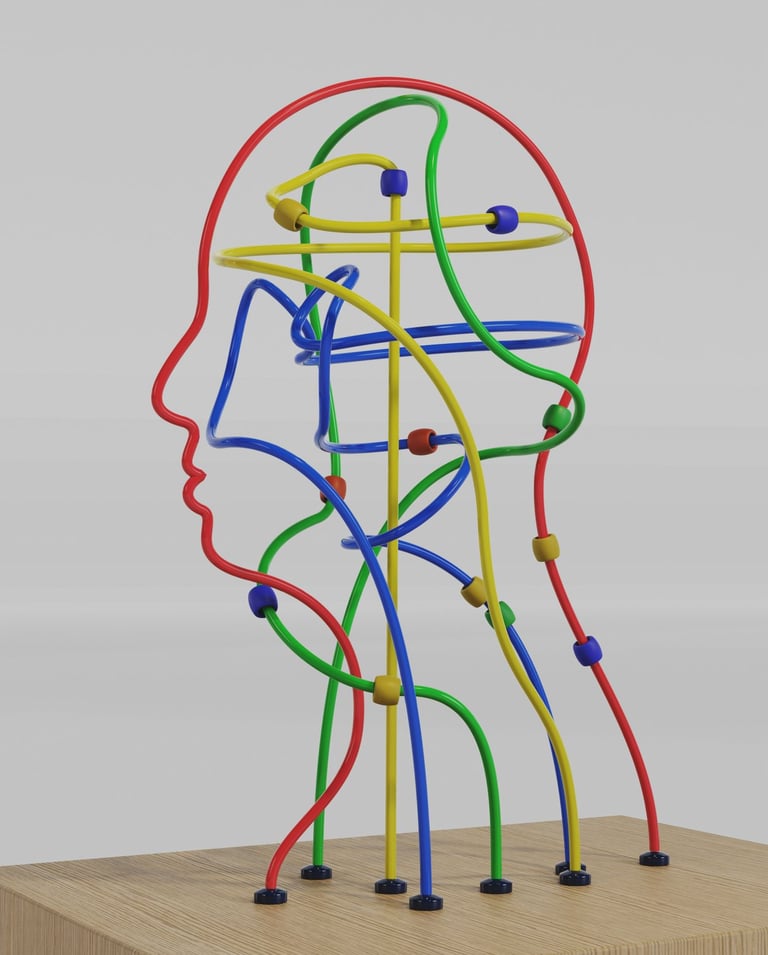Processing in Therapy
What does it really mean?
Christine Preston, MA, RP
7/19/20253 min read


What Does “Processing” Really Mean in Therapy?
If you’ve ever been in therapy—or even just overheard a therapist talk—you’ve probably heard the word “processing.”
“We spent most of the session processing her breakup.”
“He still needs time to process what happened.”
“We’re working on processing some early childhood trauma.”
But what does that actually mean? Is it just talking? Thinking? Crying? Venting?
Let’s break it down.
Processing Is More Than Just Talking
While it might sound like another therapy buzzword, processing is actually a vital part of emotional and psychological healing. It’s the internal and external work that helps a person make sense of a difficult or confusing experience—emotionally, cognitively, and sometimes even physically.
Think of it like digestion. When we eat, our body has to break the food down, absorb what’s useful, and get rid of what’s not. When we go through intense experiences—especially painful, traumatic, or confusing ones—our mind and nervous system need to do something similar. That’s where processing comes in.
What Does Processing Actually Involve?
Depending on the client’s needs and the therapist’s approach, processing can include a range of deep and meaningful internal work. Here are some of the key elements:
Making sense of an experience: Understanding how a past or present event has impacted you emotionally or cognitively.
Connecting emotions to events: Recognizing how certain feelings (e.g., sadness, anger, fear) are linked to specific memories, triggers, or patterns.
Integrating conflicting parts of self: For example, in Internal Family Systems (IFS), processing might mean letting different parts of you “speak” so they can be heard, understood, and eventually healed.
Re-evaluating beliefs or narratives: Challenging long-held assumptions like “I’m not good enough” or “It’s my fault,” and beginning to form healthier, more adaptive beliefs.
Releasing emotional charge: Sometimes just naming and expressing feelings can reduce their intensity—what people might casually describe as “getting it out.”
Regulating emotions so they no longer overwhelm or shut us down.
Building new meaning: Turning painful or confusing experiences into sources of insight, personal growth, or self-compassion.
This process helps move people from stuck, reactive states toward insight, clarity, movement and emotional regulation.
What Processing Is Not
It’s not just venting or recounting what happened.
It’s not a quick fix.
It’s not intellectualizing or analyzing something without feeling it.
It’s not rehashing something over and over with no direction.
It’s not rehashing trauma without support, purpose, or containment.
It’s not passive—it’s an active process of connecting, feeling, understanding, and integrating.
And it’s definitely not always neat or easy.
Processing can feel uncomfortable, messy, even exhausting at times. But that’s because it involves really feeling and reorganizing the way we relate to certain parts of ourselves and our story.
Why Is Processing So Important in Therapy?
Unprocessed emotions and experiences don’t just go away—they often show up in other ways: anxiety, irritability, emotional numbness, perfectionism, people-pleasing, chronic shame, or even physical symptoms.
When we avoid or bypass emotional work, it can keep us stuck in survival mode, repeating the same patterns and not understanding why.
Processing helps you:
Integrate past experiences instead of being ruled by them
Create space for new perspectives and choices
Strengthen self-awareness and emotional regulation
Move from pain toward healing
In short:
Processing = feeling + understanding + integrating.
The First Signs of Processing Can Be Subtle
Sometimes, the first hint that something is ready to be processed isn’t a breakthrough moment—it’s simply a shift. A reaction. A spark of curiosity. For example, a client who’s mostly apathetic might suddenly feel animated or argumentative when discussing a topic. That’s not just a random moment—it’s the start of something. It’s emotional activation, which can be an opening for deeper exploration.
Go at Your Own Pace
Processing isn’t always linear or fast. Some material surfaces when you're ready, and some things take time to feel safe enough to approach. A skilled therapist will help pace the process so you don’t feel overwhelmed or retraumatized. There’s no timeline for healing—only the commitment to keep gently showing up.
Final Thoughts
Processing is how healing happens in therapy. It’s how we move from surviving to understanding, from reacting to choosing, from hurting to healing.
And while it can be uncomfortable or slow, it’s also profoundly rewarding. Because with each layer processed, you make more room—for clarity, connection, and self-compassion.
You don’t have to have it all figured out.
You just have to be willing to start.
My Office
659 Central Ave
London, ON
N5W 3P7
Contacts
prestonpsychotherapy@gmail.com
226-799-1291
Christine Preston, MA, RP